1
Curling in the Maritimes
1860
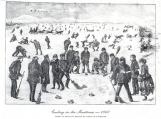
2
Curling probably began in Scotland around 1540 – the first written records appearing around this time. The sport was brought to Canada by early settlers and quickly adopted, our winter climate being perfect for curling.
The earliest stones were called "loofies", from the Scottish word for the palm of the hand. These stones, taken from the beds of streams, had been smoothed by the flow of water and, at first, weighed around 2 kilograms. A niche or hollow was added for the thumb and fingers of the players.
3
60 kg curling stone
1860
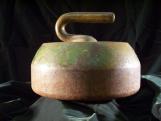
4
Some were so large that they were given names. Their development can be traced by the samples found in the bottoms of rivers and streams. Some went though the ice because they were too heavy while some were abandoned and sank when the ice melted.
5
Curling stone with early handle
1840
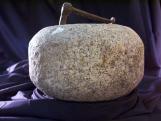
6
The 1650s saw the first handles, often nothing more than iron hinges from gate posts, making it easier to move the heavy stones. It wasn't until the late 1700s that the stones began to be ground into a spherical or round form, but even well past this date their form and shape could vary. Conical-shaped stones were used until the 1830s.
7
Wooden curling stone
1880
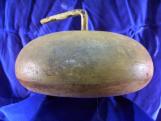
8
"Stones" were also made of wood, often as practice stones for children, or adults, who wanted to learn the game.
9
Wooden curling stone with lead weights
1894
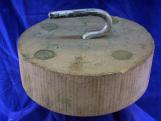
10
One such stone was found in St. Stephen. Dating from the late 1800s or early 1900s, it has four holes drilled into it which were filled with molten lead for weight. This particular one was probably used by a child as the handle is too small for a man's gloved hand.
11
Modern curling stone
7 May 2004
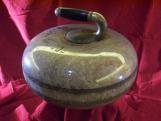
12
Modern stones have metal handles and weigh around 20 kilograms plus a one kilogram handle.
13
Curling brooms from late 1800 to mid 1900
1950
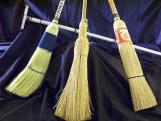
14
Brooms are used to polish the ice and clear a path for the stone. Modern brooms resemble their ancestors, which were the same brooms used in the house. In fact, household brooms were used well into the 20th century.






